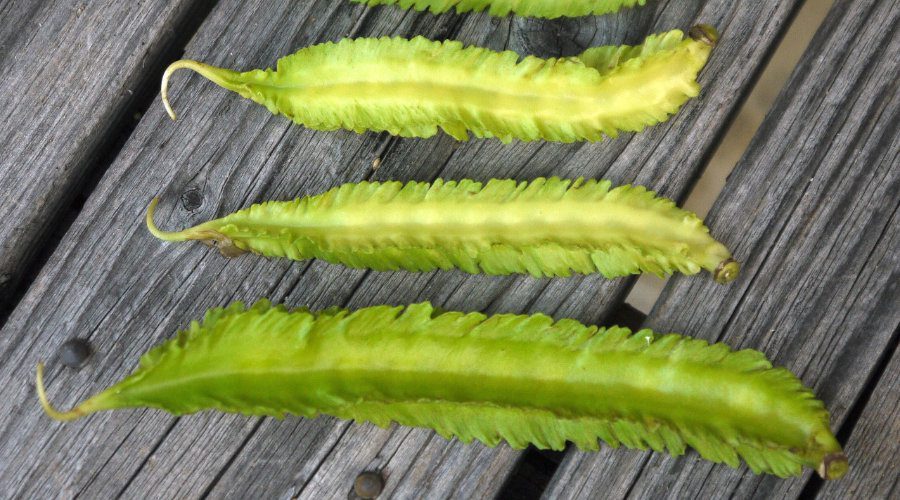Winged Bean
Plant text by Naomi Lacey, feature photo Wikipedia
Common name: Winged Bean
Scientific name: Psophocarpus tetragonolobus
Family, and related species: Fabaceae
Description including form (tree, climber, etc), other similar species
This climbing vine is a herbaceous perennial that can also be grown as an annual. It grows to 4m and produces bright green bean pods 15-20cm long with 4 frilly wings that run lengthwise down the pod. The stem of the plant is usually green but can also grow in shades of purple. The leaves vary in size, shape, and shades of green and the flowers are pale blue.
Role/ characteristics/ use in permaculture
All parts of the plant are edible – pods, seeds, roots, leaves, and flowers. The beans are very similar in nutritional value to soybeans and milk similar to soy can be produced from them.
There is huge potential for winged beans to be produced for animal feed for livestock, poultry and aquaculture purposes.
Used as a cover crop they are an excellent nitrogen fixer and also make excellent compost.
Ecology and habitat requirements
Prefers a hot, humid tropical climate and is a very adaptable plant. It is a vigorous climber so needs something such as a trellis or fence to ramble up and prefers a well-drained organic soil as it can be susceptible to waterlogging. Winged beans are also highly resistant to pests and diseases.
Access to plants
Grown most successfully from seed which germinates more readily if scarified and soaked in water overnight before planting. Plant seeds 15cm apart and plant new seeds every 4 months for a constant supply.
Seedlings are available in Darwin from most nurseries or seeds can be purchased online from Green Harvest.
Other
Winged beans are very high in protein and have high nutritional value overall. An excellent crop to use to fight malnutrition in third-world countries.
References
Norrington, Leonie, 2001, Tropical Food Gardens: A guide to growing fruit, herbs and vegetables, Bloomings Books, Melbourne, Australia
Wikipedia, 2014, Winged bean.
Mother Earth News, 2014, Introducing the Hunan Winged Bean.
Nutrition And You, 2014, Winged Bean Nutrition Facts.

